Last month, I was really enjoying seeing Small-leaved Clematis Clematis microphylla come into flower beside my verandah.
The male plant sprang into fruit, displaying its long, narrow, widely spread petals (which are really sepals as it has no petals), and short stamens.
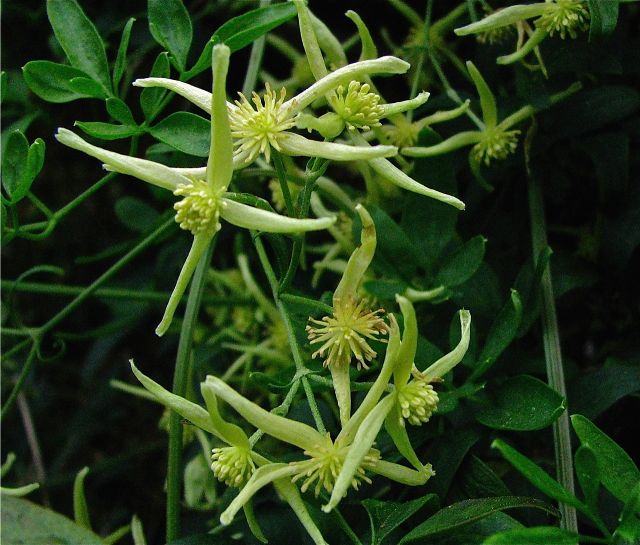
Small-leaved Clematis (male)
The female plant flowered later, briefly displayed her wares before the flowers quickly drooped.

Small-leaved Clematis (female)
In the Microscope Group, we examined the female plant, as I have always wondered what the masses of feathery ‘parachutes’ that gradually develop, were. I discovered that the much longer female parts (compared with the male stamens) consisted of several carpels, each with a swan-like, recurved tip, surrounded by numerous silky, feathery, or plumose awns, which look great under a magnifier. These develop and darken over months, eventually providing very effective airborne seed dispersal in windy weather. I do not recommend having female plants growing near an external doorway!
Hibbertia, the Guinea flower, was another plant that we examined in the Microscope Group. All of the three main species can be found flowering this month, and are sometimes confused with Goodenia, as the flowers are the same colour, yellow, and of similar size and type. The defining difference for me has always been the regular placement of the five petals of the Guinea-flower, compared with the irregular placement of the petals of Goodenia.
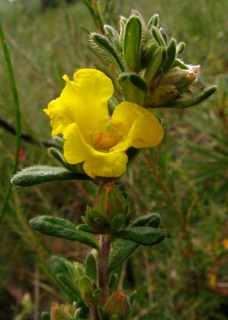
Silky Guinea-flower
The male organs, or stamens, of the Guinea-flower are worth a close look, because of their varied and clustered nature. The leaves of the three types are different, and are the best way to recognise the species. Hibbertia sericea var. sericea Silky Guinea-flower has a broader leaf with rolled or revolute margins, whereas Hibbertia riparia Erect guinea-flower, and Hibbertia fasciculate var. prostrata Bundled Guinea-flower, have fully rolled or revolute leaves. The Bundled has much finer leaves, which are in clusters, or said to be bundled.
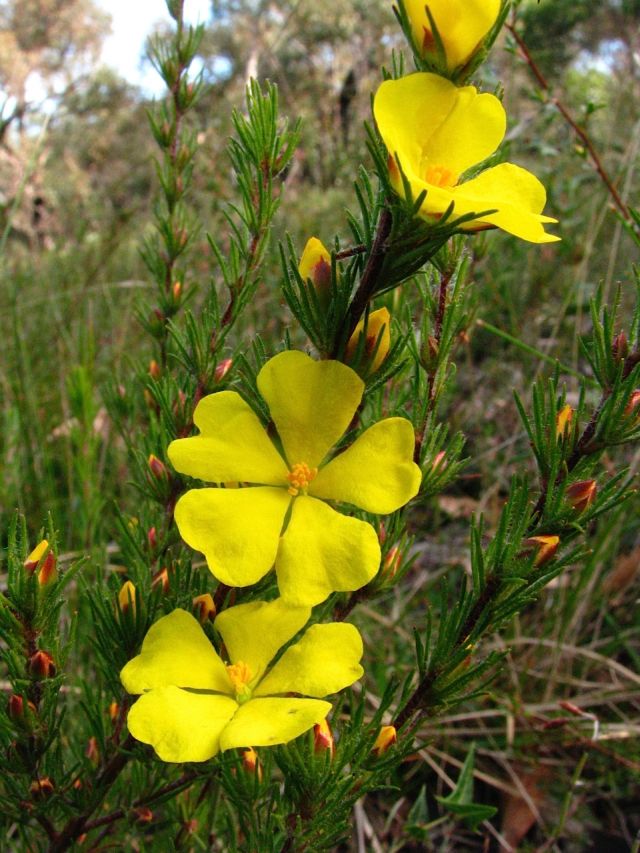
Bundled Guinea-flower
One of my favourite early spring flowers is Daviesia brevifolia Leafless Bitter pea. This unappealing, stiff, leafless, spiky bush has been springing into bloom, with delightful, vivid apricot to salmon-pink flowers.
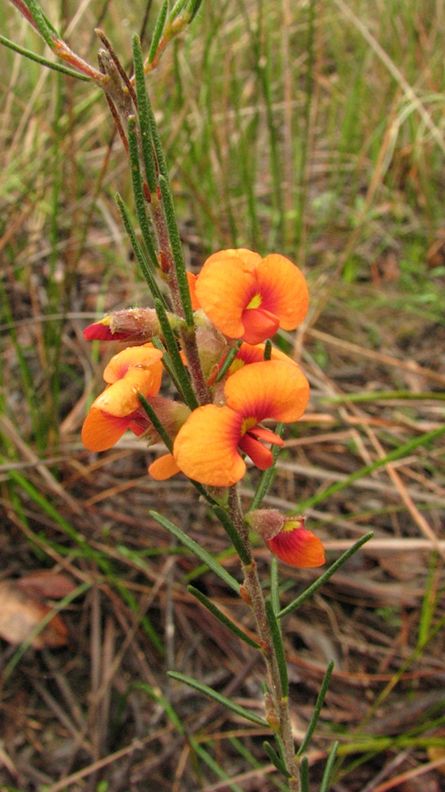
Leafless Bitter-pea
Among the mass of more showy flowers this month, you may have to look carefully to notice the more modest, but delightful, flowers of two very low-growing or prostrate plants. I have just discovered that Rhytidosporum procumbens White Marianth, with its tiny flowers of five, white, pointed petals, has pink- tipped buds, and a pinkish tinge to the end of the petals.
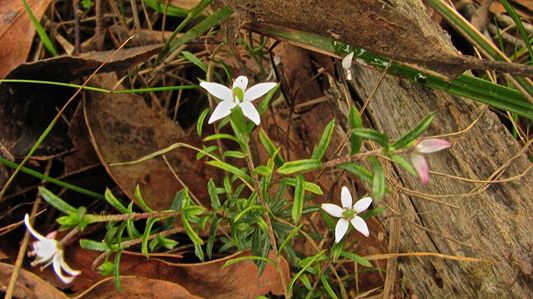
White Marianth
Always a delight for me are the drooping white and pink flowers of Rosy Baeckia. This plant has done a 360 degree name change, and, thankfully, returned to being Baeckia ramosissima subsp. prostrata.
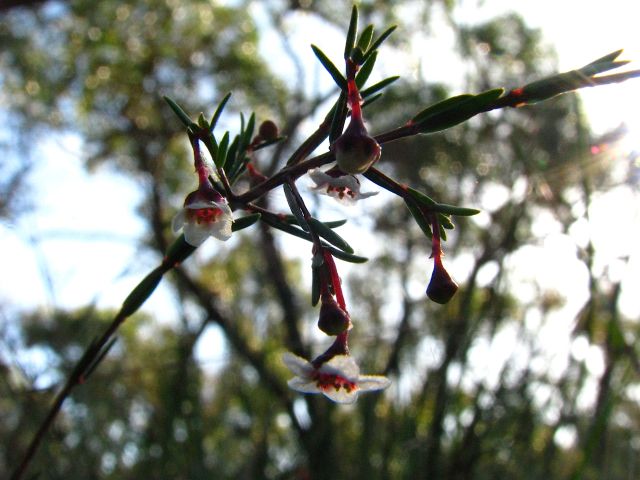
It forms a mat of thin, prostrate, interlacing branches. The flowers hang face down on short red stems, and it is thought that this aids their pollination by ground-dwelling insects such as ants – this could make an interesting spring activity to try to see!
Another plant with tiny flowers to look out for is Pultenaea tenuifolia Slender Bush-pea, a matted, low-growing shrub, that has markedly increased in recent years along the cliff tops at Aireys Inlet. It has abundant tiny, hooded, yellow flowers with red markings.
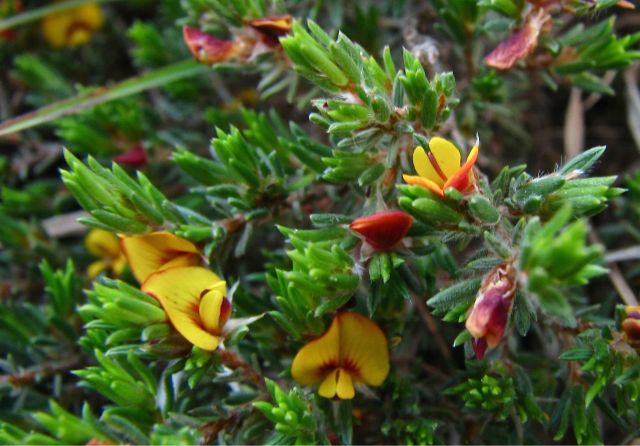
Slender Bush-pea
There will be many flowers to see this month, and I have only touched on a few, so be sure to take your Flowers of Anglesea and Aireys Inlet on your spring walks.